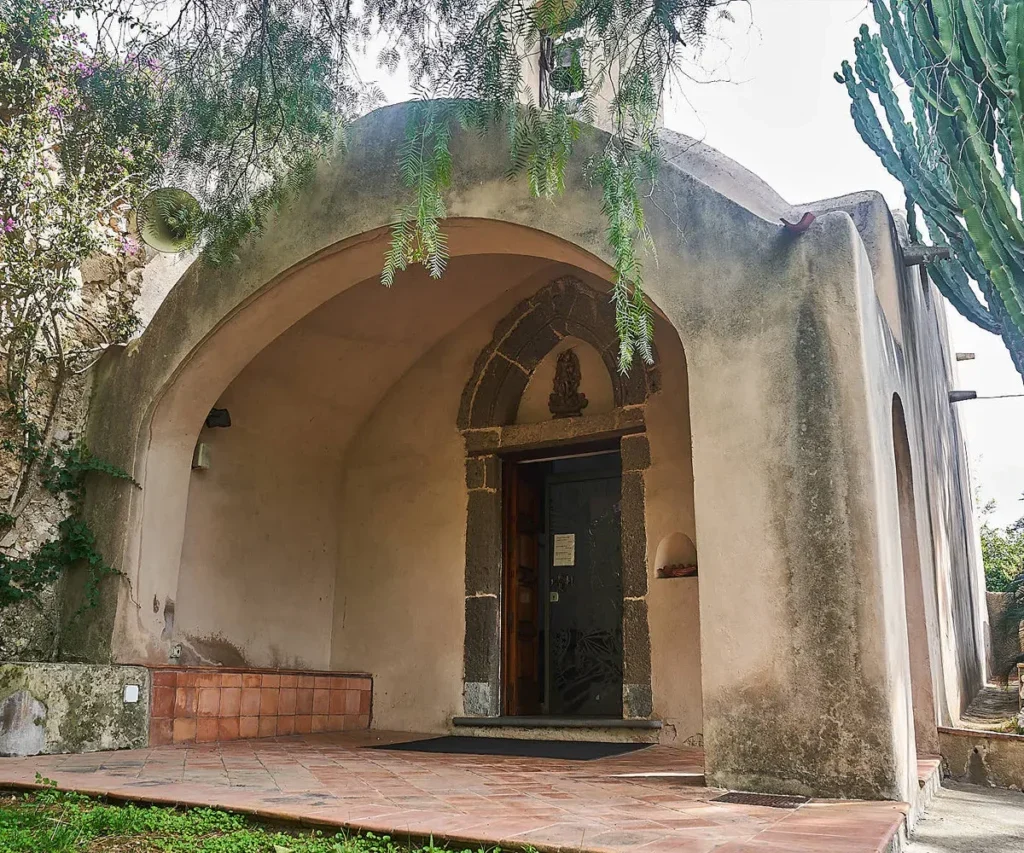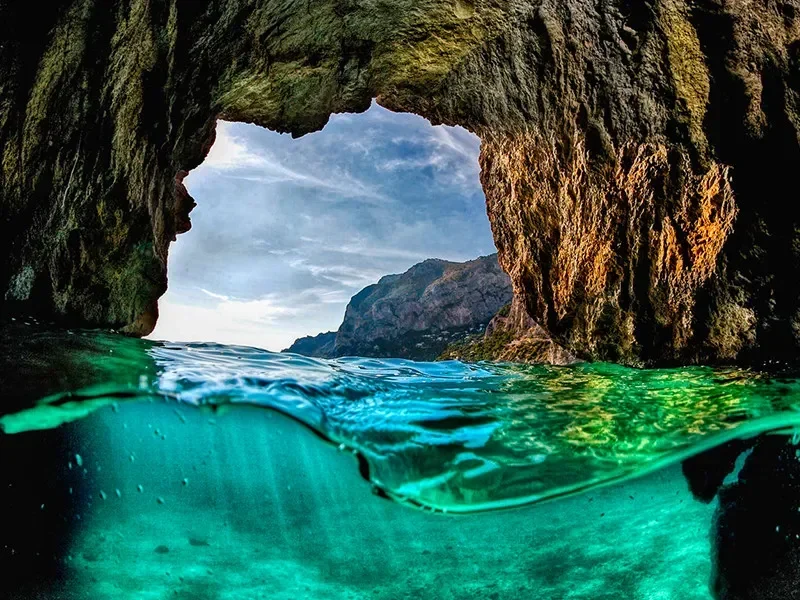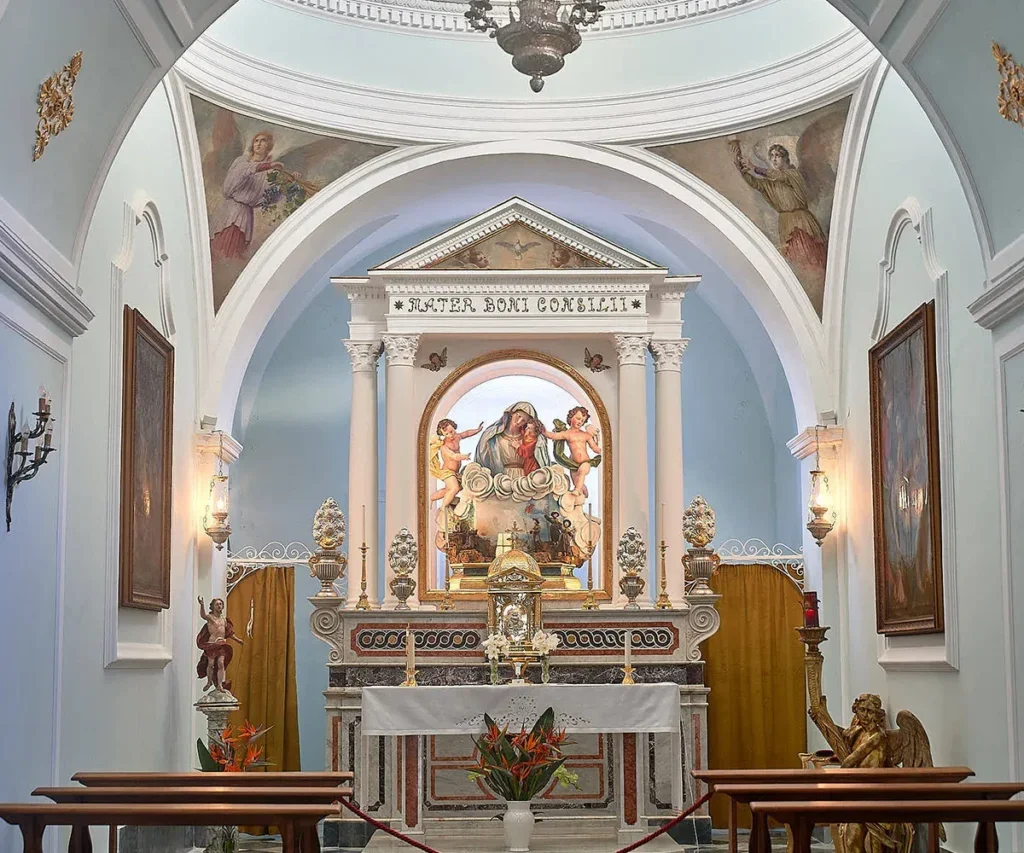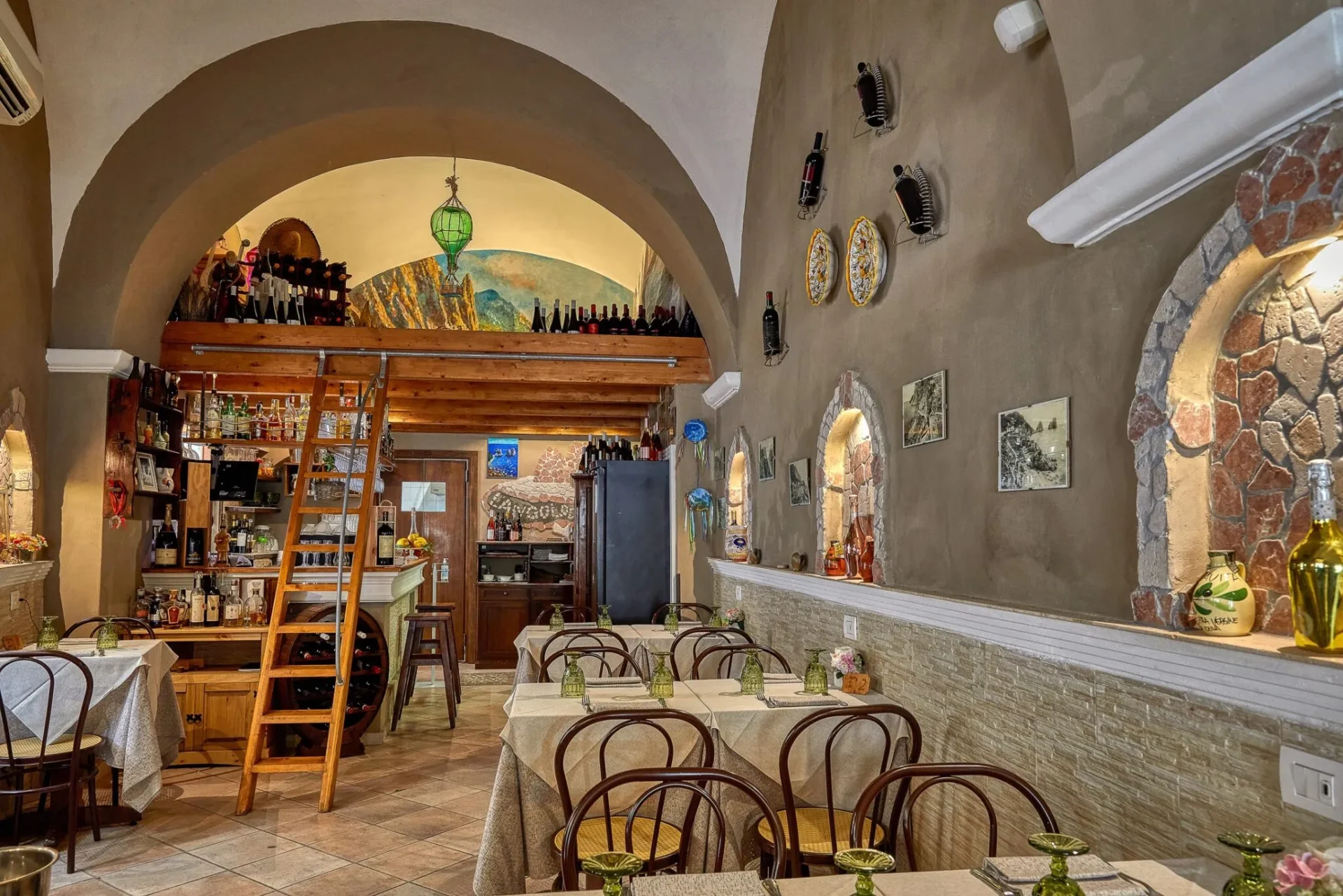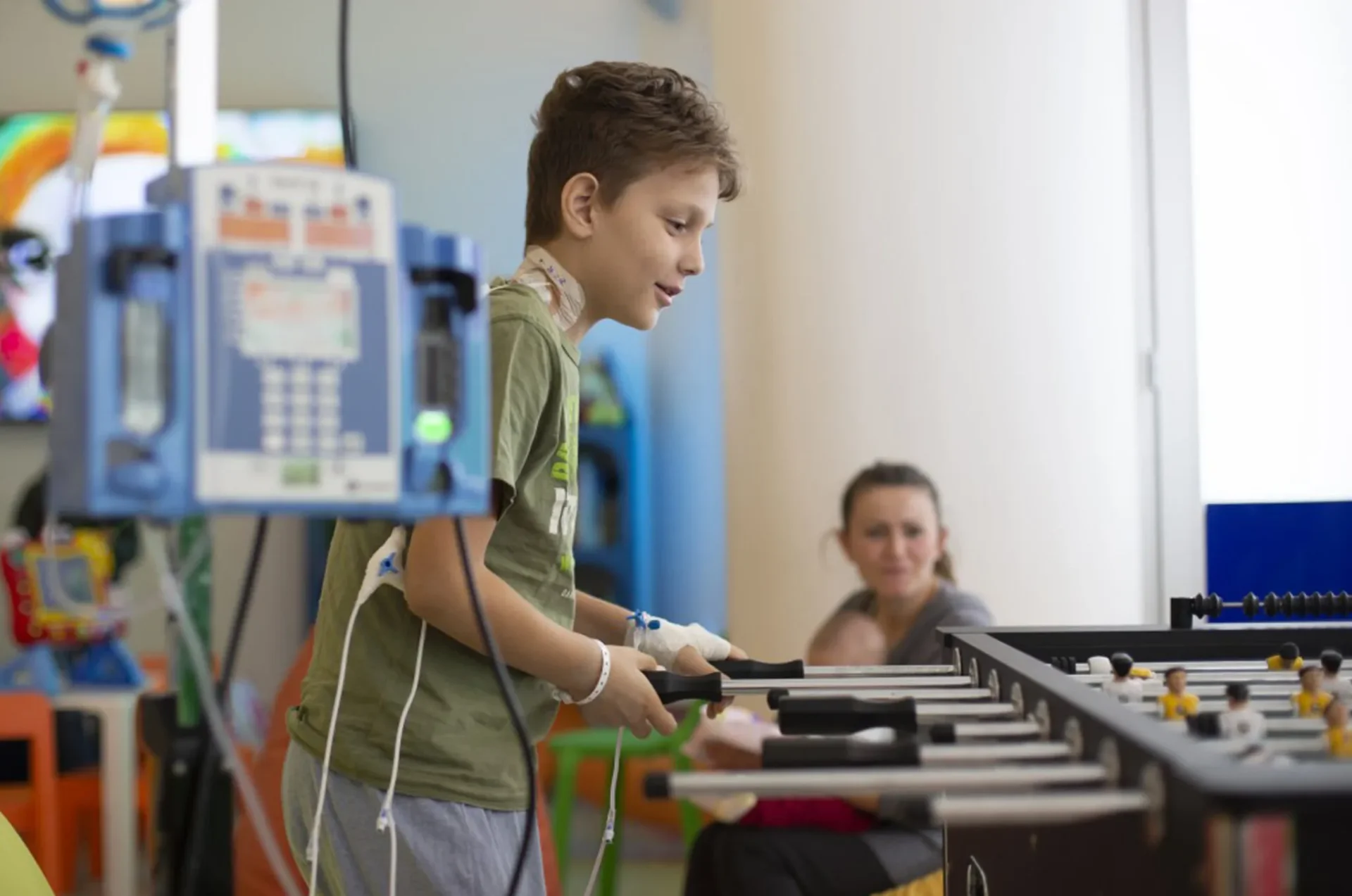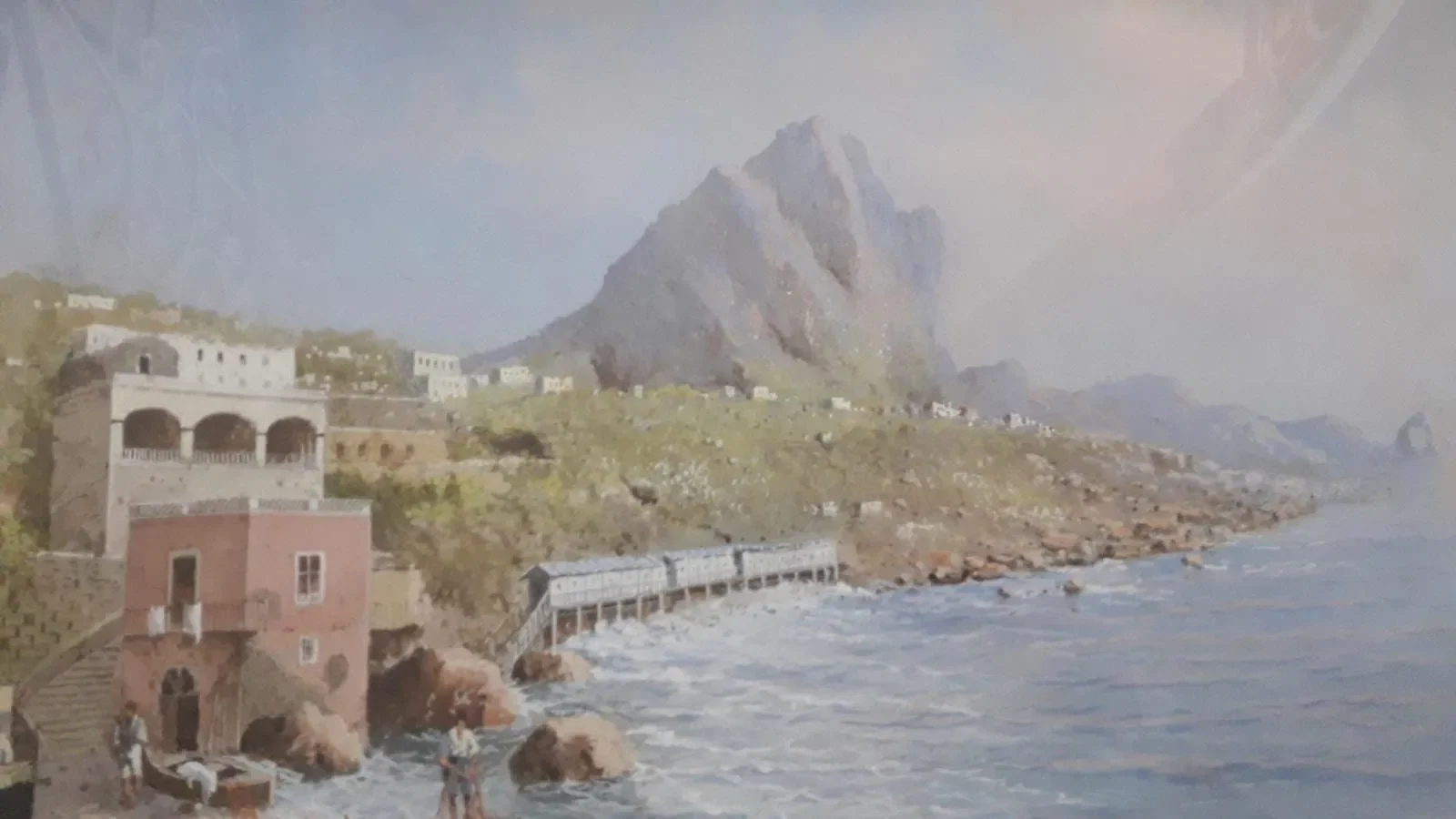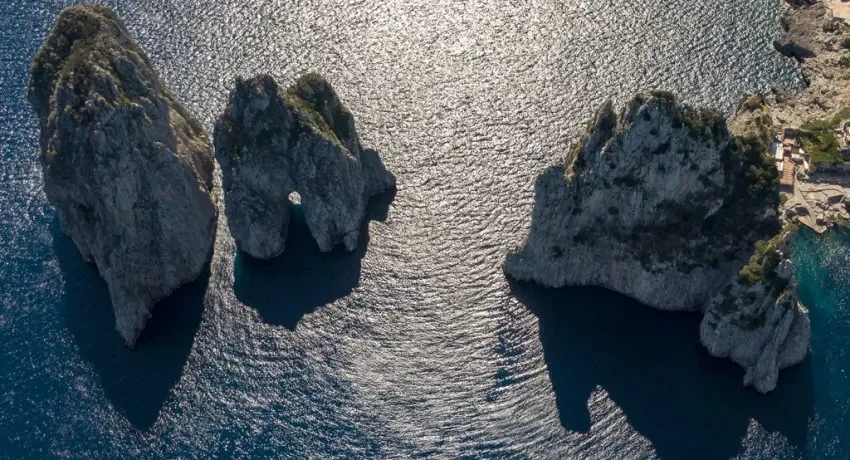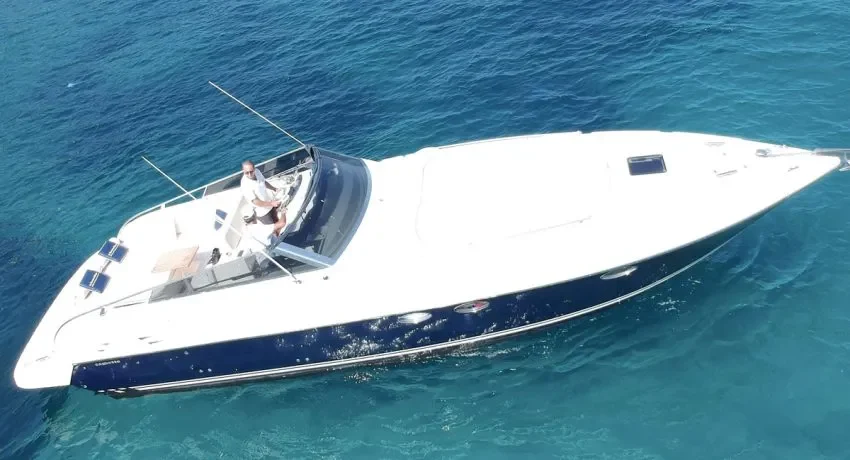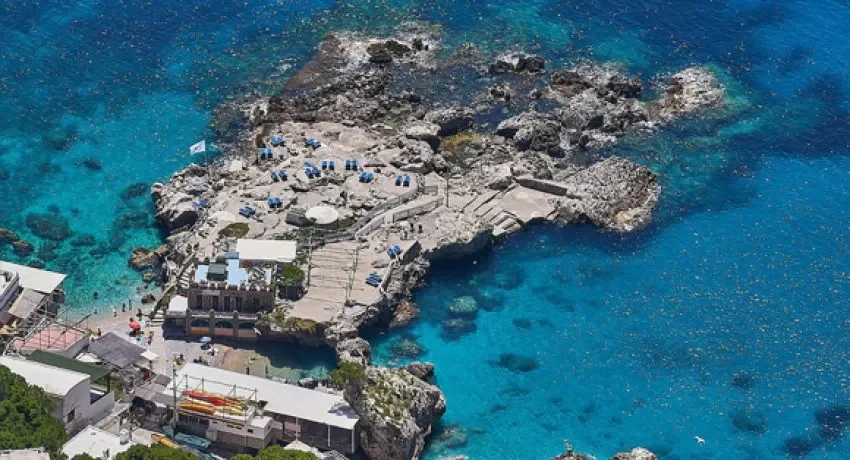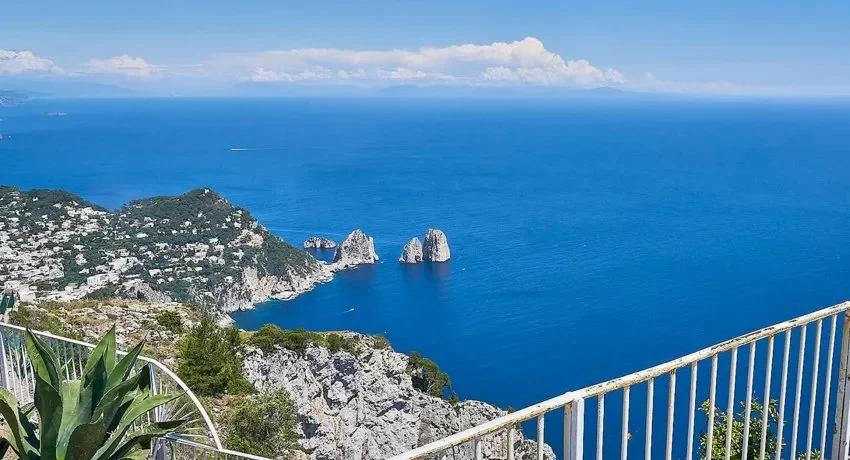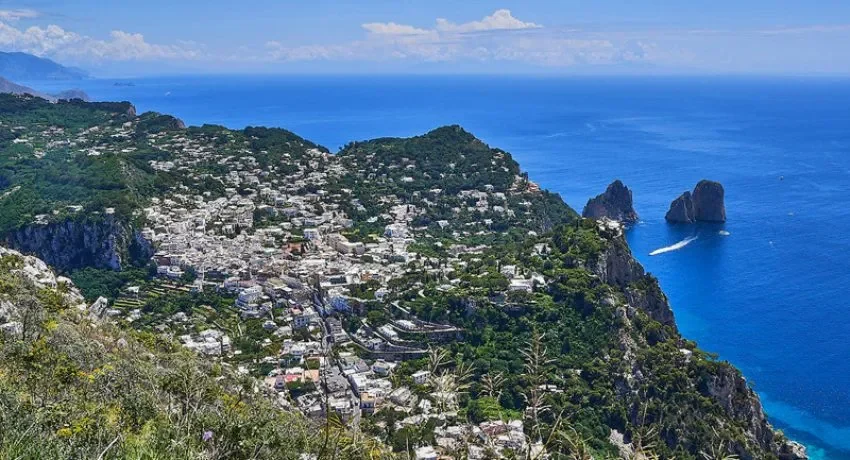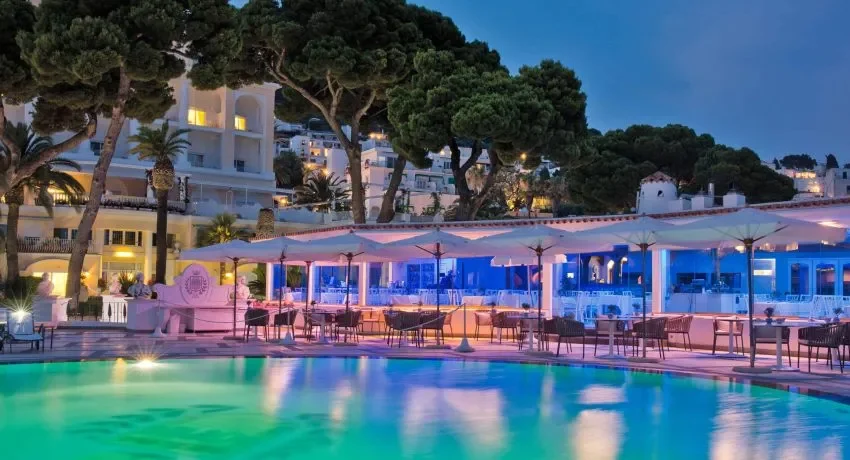From the iconic Faraglioni to the Natural Arch, passing through the famous Piazzetta to the magnificent Blue Grotto: there is truly an embarrassment of choice when it comes to what to see in Capri. However, if you’re looking for lesser-known attractions, further away from the mass tourism but still unmissable, this is the article for you! We present to you five “hidden gems” of Capri, destinations that will leave you with a delightful memory of your trip to the island.
Church of San Michele della Croce
Here is a small gem of medieval sacred architecture, nestled in one of the most romantic gardens in Capri: the Church of San Michele is dedicated to the worship of Saint Michael the Archangel, as was the nearby cave of the same name, which was also used as a refuge during Saracen raids.
Built in the 12th century, over time it has undergone numerous modifications, reflecting the changing tastes of different eras. It is easy to reach, even though it is somewhat off the traditional tourist routes: from the Piazzetta, take the road that leads to Villa Jovis, where you will find the church protected by a stone wall and the garden’s flora.
Belvedere Cannone
Seldom visited by tourists and not often recommended by guides, yet it is a must-see on the list of what to see in Capri, the Belvedere Cannone offers a breathtaking view of the Faraglioni, the Siren’s Rock, the Certosa, the Gardens of Augustus, and the Grotta delle Felci, in other words, all the most iconic places on the island.
The name Belvedere Cannone derives from a historical event: here, in 1808, the English placed a cannon for the defense of the southern part of the island. In the 20th century, thanks to a colony of German artists who stayed here to paint, it was called Mahler Platte or Piazzetta Dei Pittori (The Little Square of Painters). The walk to get there is also worth it: you’ll pass by many historic and literary villas of artists and painters from the 19th century.
Green Grotto (Grotta Verde)
The Green Grotto, though less famous than its cousin the Blue Grotto, is the most renowned cave on the western side of the island. It gets its name from the emerald green color of the water, which reflects along the walls and the rocky ceiling. On the same side of the island, there are also other lesser-known caves, such as the Cave of the Sail and the Cave of the Saints, named for the presence of rocks inside that resemble human figures in the act of praying. Capri is truly an exceptional place to admire the geological wonders that nature has to offer.
White Grotto and Wonderful Grotto (Grotta Bianca e Grotta Meravigliosa)
Another geological wonder of the island can be found near Punta Massullo, right where the picturesque Villa Malaparte stands: it consists of two caves in one, the White Grotto at sea level, and the Wonderful Grotto in the upper part.
The first is named for the color of the tuff that colors the cave’s interior. Very spacious at the entrance, inside you can find signs of human presence: for centuries, fishermen have used this cave as a shelter for boats during sudden storms. The German scientist Kyrle discovered that the water inside the cave contains a high percentage of fresh water; initially, it was thought to be a spring, but it was later found that the cause was rainwater dripping through the rocks.
The Wonderful Grotto, on the other hand, is a terrestrial cave. It was writer Heinz Ewers, the inventor of the Capri horror stories, who gave it its name. Engineer Meyer, already the designer of Via Krupp, planned a small pier and staircase to ascend to the cave in the early 1900s, but they were only completed in 1927.
Visiting the Wonderful Grotto is like retracing the island’s millennial geological stratification: limestone, tuff, and sandstone alternate, with dozens of large stalactites and stalagmites dotting the ceiling and floor.
Church of Santa Sofia
Finally, let’s move away from the peripheral areas of the island to return to the heart of the historic center of Anacapri, where the most important church of the second municipality of the island stands, dedicated to Saint Sofia. The charming architecture is built on the site of the ancient Church of San Carlo, and it is around this church that the first settlement of Anacapri grew. Built in the 16th century, it fully reflects the Baroque style of the time, and next to it stands the Ancient Bell Tower, completed in the 18th century.
The interior is divided into a central nave with a barrel vault and two side aisles with vaulted ceilings; the latter end with two chapels dedicated to Saint Anthony and the Madonna of Good Counsel. A jewel of Caprese art often overlooked by tourists but certainly deserving of a place on the list of what to see in Capri.
Article by Stefano D’Alessandro
